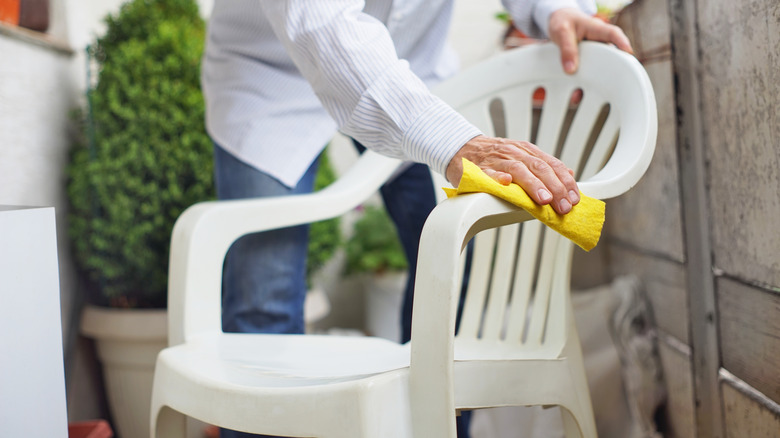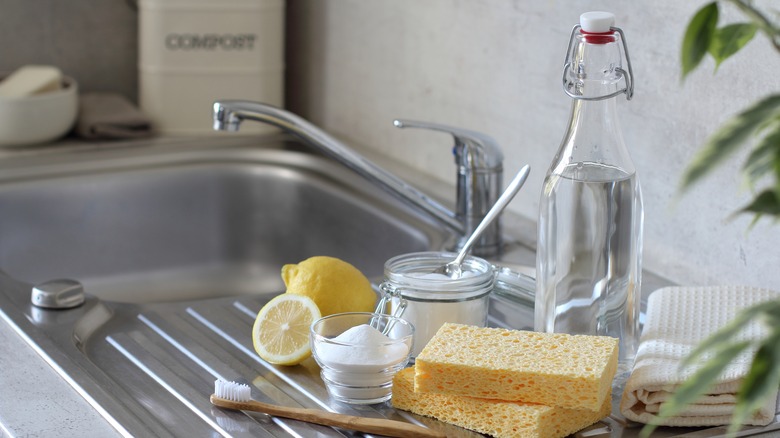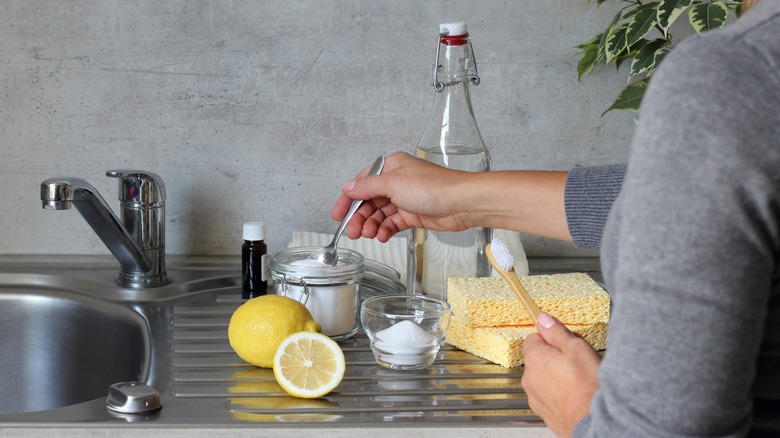How Vinegar Can Get Your Plastic Furniture Sparkling Clean
White vinegar, a common household item, offers a gentle yet powerful solution for cleaning plastic furniture. It is composed mainly of acetic acid and water, derived from the fermentation of ethanol. Its cleaning prowess is attributed to the acetic acid, which works effectively to dissolve grime and residues that are often resistant to water and regular soaps. The gentleness of white vinegar is a significant advantage, especially for plastic furniture, which can be susceptible to damage from harsher cleaning agents. It ensures that while the furniture gets cleaned effectively, the surface remains unharmed, maintaining its appearance and longevity. Unlike bleach, it is natural and less abrasive, making it ideal for regular use.
Moreover, white vinegar's cleaning and disinfecting properties also make it a comprehensive choice, eliminating germs and bacteria in addition to cleaning. Vinegar's versatility in cleaning methods also makes it suitable for various types of stains and conditions, from more persistent but milder issues like mildew to tougher, more resilient stains. While it has a distinctive smell, it is generally tolerable, especially for those with sensitivities to strong chemical odors. That being said, before cleaning, it helps to know how to properly use it. It's not just about the cleaning itself; it's also about preserving the quality and extending the life of your furniture.
Using white vinegar to clean plastic furniture
When tackling tough stains on plastic furniture, white vinegar offers several application methods. If you're dealing with mildew stains, create a strong anti-mildew solution by mixing ¾ cup of distilled white vinegar with ¼ cup of water. Spray this blend onto the mildewed areas and let it sit for around 10 minutes. This duration is key for the vinegar to effectively break down and remove the mildew. For more persistent stains, take a direct approach. Soak a cloth or sponge in distilled vinegar and apply it to the stains.
When cleaning colored plastic furniture, you'll need a gentler solution. Mix ¼ gallon of warm water with ¼ cup of vinegar for a milder solution. Use this diluted mixture with a rag to gently cleanse the furniture, ensuring that you remove stains without compromising the vibrant colors. For stains on plastic furniture caused by oxidation (a process where exposure to oxygen and moisture leads to discoloration and white streaks), finish off by sprinkling baking soda onto a damp sponge and gently scrubbing the oxidized area. The mild abrasiveness of the baking soda effectively lifts the tarnished layer, while the vinegar's acidic properties work to dissolve and remove the stain. This method tackles these challenging stains efficiently, restoring the furniture's appearance without damaging its surface.
Important considerations when cleaning plastic furniture
When cleaning with vinegar, try to also adopt a few smart cleaning and maintenance practices to keep your plastic furniture in top shape. First off, it's important to remember a few key points. Although vinegar is a natural cleaning solution, it's still important to perform a spot test on an inconspicuous area. This will ensure the solution doesn't adversely affect the plastic. If your furniture has colored or painted surfaces, be mindful of the vinegar concentration to avoid fading or stripping the color.
Secondly, don't combine the mixture with bleach or any harsh or abrasive cleaners. These can be too strong for plastic, leading to wear and loss of shine over time. At the start of the outdoor season, give your plastic furniture a thorough cleaning to clear off any dirt, pollen, or residues that have built up during its time in storage or while being unused. A good initial clean not only enhances the look of your outdoor space but also contributes to the longevity of your furniture.
As the season ends, store your pieces in a safe place. A good clean with vinegar before storage helps to avoid the buildup of grime and makes the furniture easier to use again when needed. Remember, plastic can become brittle in cold temperatures, so always protect your pieces adequately.


